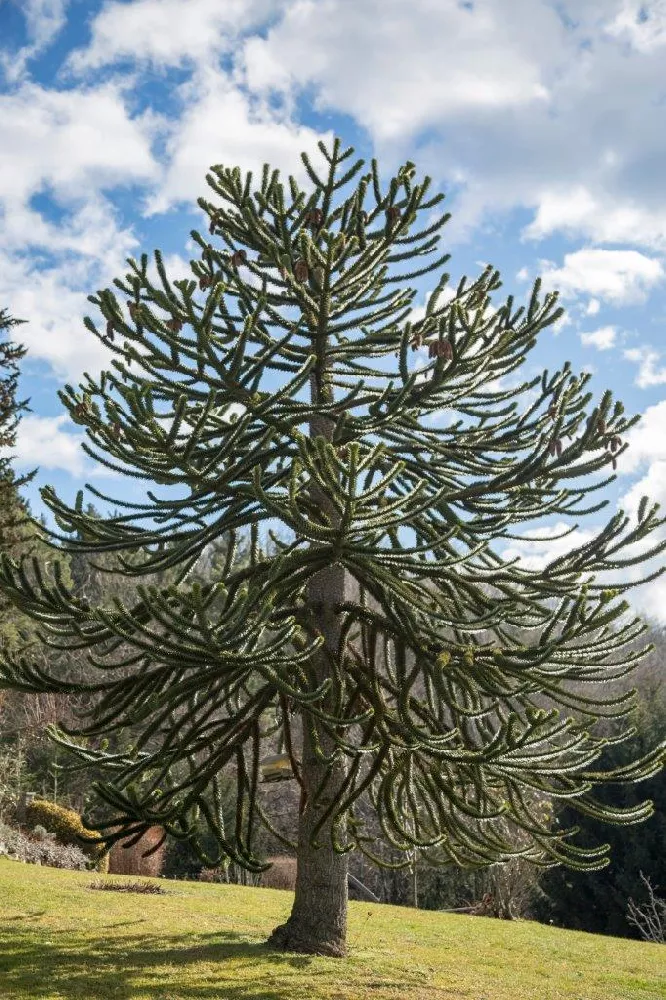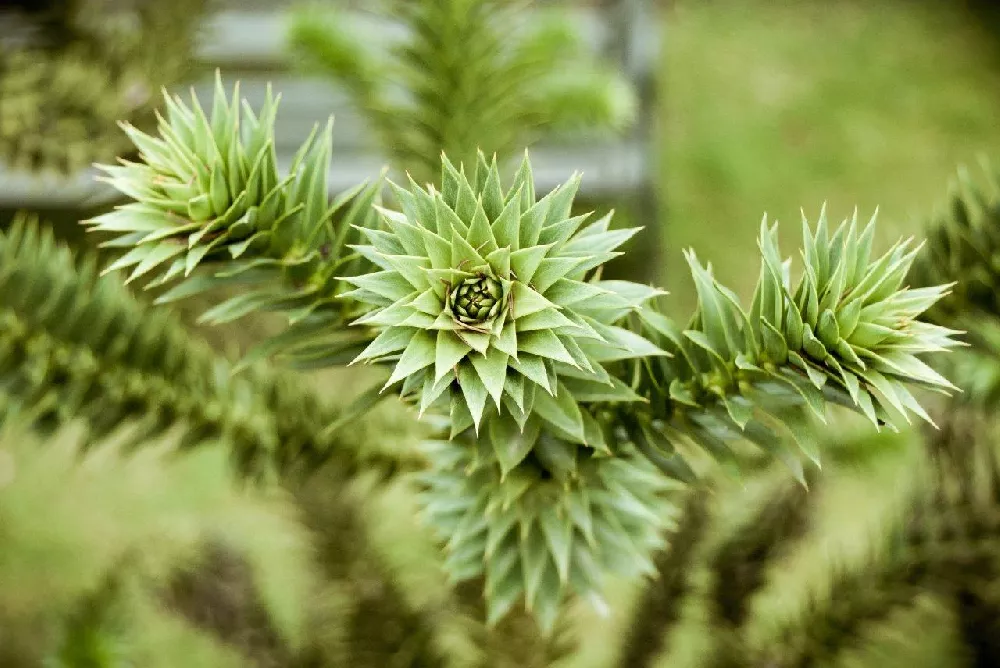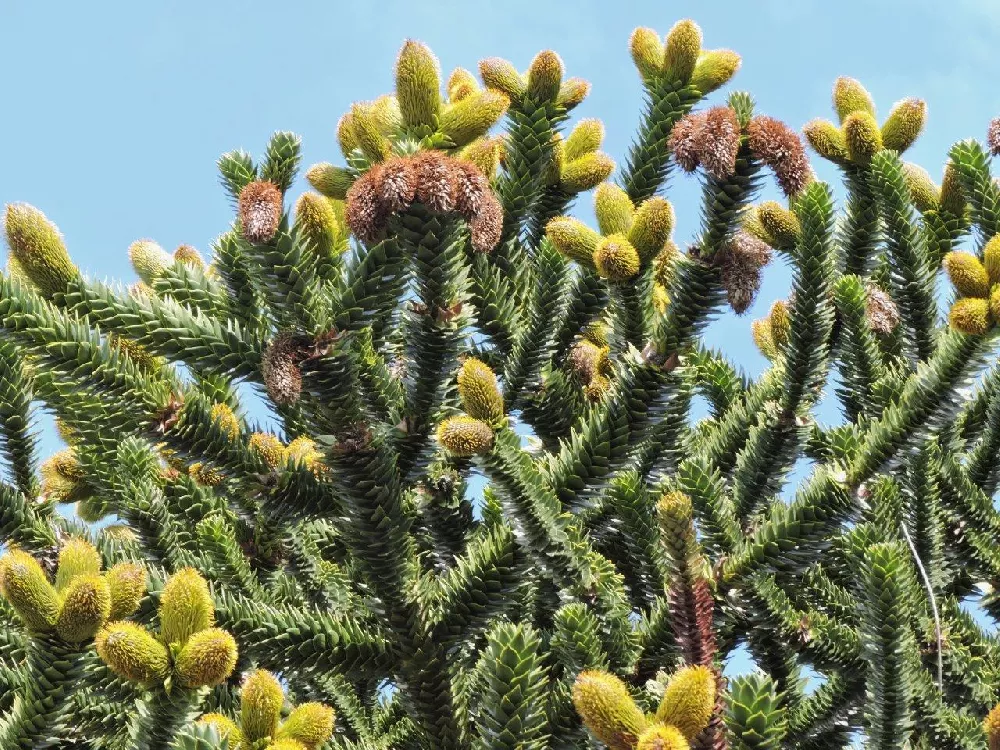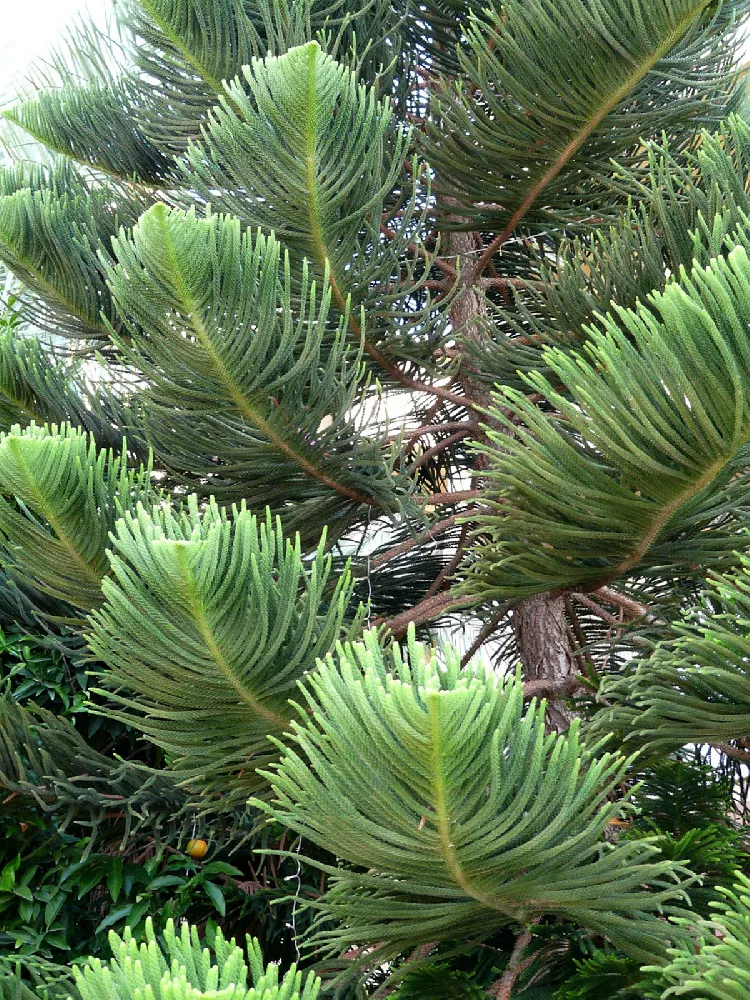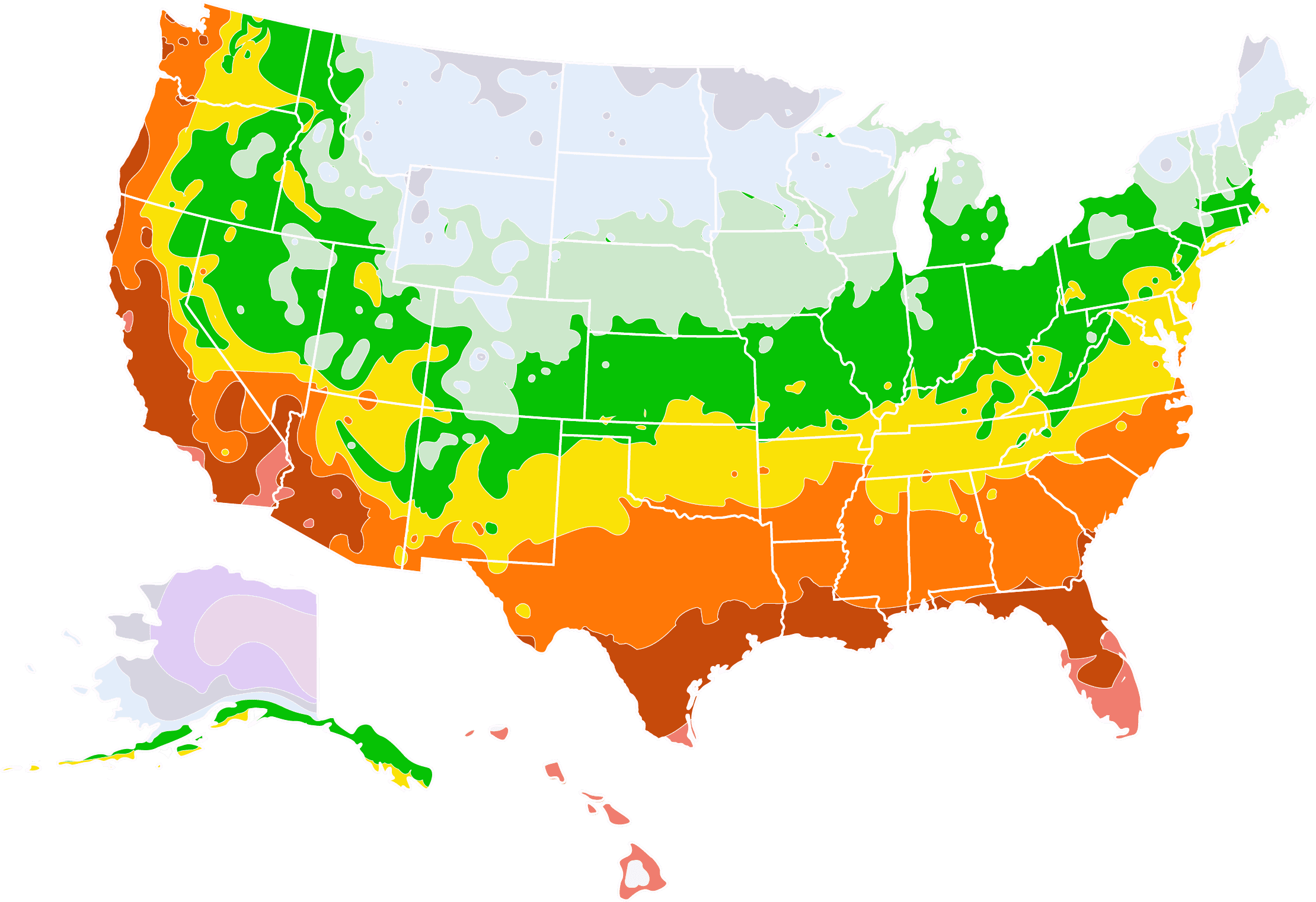- Home >
- Ornamental Trees >
- Monkey Puzzle Trees
Monkey Puzzle Trees for Sale - Buying & Growing Guide
Monkey puzzle trees are an excellent option for people who want a tree that is a bit out of the ordinary. While Araucaria araucana is well known in South America, it is the national tree of Chile, in other areas of the world this species is an anomaly. The most notable features of this plant are its intriguing growth pattern and its bristly textured foliage that covers most of the branches. Those traits make monkey puzzle trees an attention-grabbing specimen for gardens in warmer zones. Here are some other interesting characteristics of monkey puzzle trees:
- Unique growth habit and overall appearance.
- Interesting foliage textures.
- Extremely easy to grow.
Enter your zip code to find nearby stores that may carry this plant.
Plant Care
Sunlight

Prefers full sun but will also survive in partial shade.
Watering
Water once a week in the first season. After the first season, allow soil to become dry between subsequent waterings.
Fertilizing

Not always necessary, use an all-purpose fertilizer that is water-soluble if you fertilize.
Planting and Care
Planting instructions
To grow a monkey puzzle tree successfully, you will need a warm climate and an area with ample sunlight. Typically, these trees will survive as far north as USDA hardiness zone 7. Their warmest growing USDA hardiness zone is 10. If you are in such an area, you will also want to ensure that the soil in which you plant your monkey puzzle tree is rich in organic matter. Other than that, you’ll have some leeway regarding the soil as this species can live in clay, sand, or rocky conditions. The monkey puzzle tree thrives in soils at nearly any pH level.
Watering and nutrients
During the first growing season, it is necessary for you to water your monkey puzzle tree once per week or once every two weeks. This watering will help to establish the tree. After establishment, you can reduce your watering schedule drastically. All you will need to do is notice when the top three inches of the soil around your monkey puzzle tree become dry. When that occurs, it is time to supply water.
In some instances, a monkey puzzle tree may need little to no fertilization at all. This fact is a testament to the ease with which you can raise one of these plants. If you do choose to fertilize, simply use a standard all-purpose fertilizer.
Pollination
The most important fact to know about monkey puzzle tree pollination is that these trees usually grow as either a male or a female version. That means that you will need to plant both varieties if you hope to see your monkey puzzle trees produce fruit. On a rare occasion, you will find a monkey puzzle tree that has both male and female parts. This can make the pollination process much easier.
Pruning
Monkey puzzle trees can grow well with minimal pruning. If you choose to perform some pruning on your tree, you should focus on removing dead or broken branches. Other than that, the only other reason you would prune one of these trees is to achieve a particular shape. Since these trees can grow exceptionally tall, gardeners often prune the lower branches. No matter what your pruning goals are, your pruning should take place in early spring.
Pests, diseases, and animals
Monkey puzzle trees are easy to care for overall, but that does not mean that they are completely impervious to pests and diseases. Most issues arise when a monkey puzzle tree grows in soil that is excessively wet. This can lead to fungal diseases or canker. Monkey puzzle trees can also serve as hosts to mealybugs and spider mites. However, if you manage to provide the ideal growing conditions for this species, it will typically live a pest and disease-free life.
Harvesting
It can take multiple decades for a monkey puzzle tree to reach sexual maturity. But when it does, it will begin to produce edible, nut-like seeds that are similar to pine nuts. To produce those fruits, you will need both a male and female version of the monkey puzzle tree. Occasionally, a monkey puzzle tree will grow as a hermaphrodite, which simplifies the fruit-producing process. Once your monkey tree is old enough, its fruits will emerge in mid to late summer.
Achieving maximum results
Many people feel drawn to monkey puzzle trees because of their distinct appearance. What they often fail to recognize is that these trees can grow to be very large. At maturity, they may be more than one hundred feet tall. So, it is important to give your monkey puzzle trees plenty of space to grow and expand during your planting stage.
FAQs
How large do monkey puzzle trees grow?
Monkey puzzle trees grow to an astounding size. At maturity, this tree species will reach 150 feet tall. At times, it will grow even taller than that. These trees also develop a thick trunk that can be as wide as eight feet in diameter. The only caveat here is that it can take a long time for a monkey puzzle tree to reach those dimensions. This tree is a slow-growing species that gains just a few inches each year.
How long do monkey puzzle trees live?
One of the most impressive aspects of monkey puzzle trees is that they have an extremely long lifespan. In some cases, these trees can live for 700 years or more. In an ideal setting, it is entirely possible for one of these trees to live for a full 1,000 years. That longevity is part of the reason why these trees are able to reach such impressive heights.
Where does the monkey puzzle tree name come from?
The name monkey puzzle tree is a reference to the textured foliage that this tree has. The idea behind the name is that the branches of this tree are so complex that a monkey would be confused when trying to climb it. Before that name came to be, the monkey puzzle tree went by the name Joseph Banks pine, which honors a famous English botanist.
